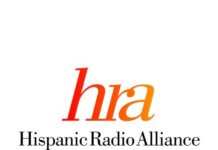
While the medium lagged far behind its digital contemporaries, radio remains a vital part of daily routines according to a new study. The Harker Bos Group’s “State of Media 2024” whitepaper delves into the changing media consumption habits across US demographics.
This extensive study, involving over 500 participants aged 18 and above, focuses on urban versus suburban and rural residents, and office workers versus those in remote or hybrid work environments, offering a fresh perspective on media engagement.
Social media stands out as the most engaged platform, with 68% of respondents interacting with it three or more days per week, followed by streaming TV at 60%, and cable/satellite TV at 51%. On the other end, radio leads the bottom three categories at 38%, followed by video games at 35%, and podcasts in last at 21%.
Notably, 41% of those surveyed say podcasts are never a part of their weekly media habits.
The commute still has the most power for AM/FM. Harker Bos found that morning drive still rules the platform. While office workers and remote workers both were almost just as likely to listen to the radio at least once per week, office workers had an 8% higher chance of being high-frequency radio listeners than hybrid employees.
Music stations were the overwhelming favorite genre, with News/Talk placing second, and Sports finishing third. Interestingly, religious radio finished a distant last place in terms of format interest, despite being the fastest-growing genre in the US.
Finally, radio is still a valued community partner, with 54% of those surveyed saying that community updates and local event coverage are what keep them coming back.
For podcasts, True Crime, News/Politics, and Sports genres attract high-frequency listeners. Discovering new podcasts mainly occurs through podcast players, social media, and search engines. The study highlights the importance of show notes and the impact of host-read ads on purchasing decisions, suggesting a potential for more engaging and less intrusive advertising formats.
Urban audiences, compared to their suburban and rural counterparts, show a higher frequency of radio and podcast listening, indicating varying preferences based on geographical location.
“The State of Media 2024” analysis underscores the importance of digital media, given the high engagement on platforms like streaming TV and social media. It also highlights the need for radio stations to adapt their content strategies to meet the diverse needs of different population segments, emphasizing personalized content, and user-friendly interfaces to enhance user experiences.
Full details from the whitepaper can be found on the Harker Bos website.





